Geotechnical materials represent one of the most revolutionary advancements in construction engineering. They not only offer high-performance, cost-effective solutions but also enable the construction of more economical, sustainable, and resilient infrastructure compared to traditional alternatives. So, what exactly are geotechnical materials? What types exist, and how do we apply them? Let’s delve into this topic with Phú Thành Phát.
What are Geotechnical Materials?
Composition
Geotechnical materials, also known as geosynthetic materials, are manufactured from various polymers, most commonly high-density polyethylene (HDPE), polypropylene (PP), and polyester (PET). These polymers exhibit high resistance to biodegradation and chemical degradation. Manufacturers often combine them with additives or modifiers to achieve desired properties, such as weather and UV resistance. For specialized applications requiring exceptional strength, they may use other polymers like aramid or polyvinyl alcohol (PVA).
Types of Geotechnical Materials
Geogrids
Geogrids are network-structured materials with high tensile strength, formed by interconnected polymer ribs (HDPE, PP, etc.) through methods like extrusion, drawing, or weaving.
The grid structure allows for strong interaction with surrounding soil. Soil particles interlock with the grid, creating a cohesive mass that reinforces earth structures and enhances load-bearing capacity.
Phú Thành Phát currently offers three main types of geogrids:
- Uniaxial Geogrids: Simple structure, with strength in one direction.
- Biaxial Geogrids: Square or rectangular rib structure, providing strength in two directions: longitudinal and transverse.
- Triaxial Geogrids: The most advanced and complex structure, offering strength in three directions.
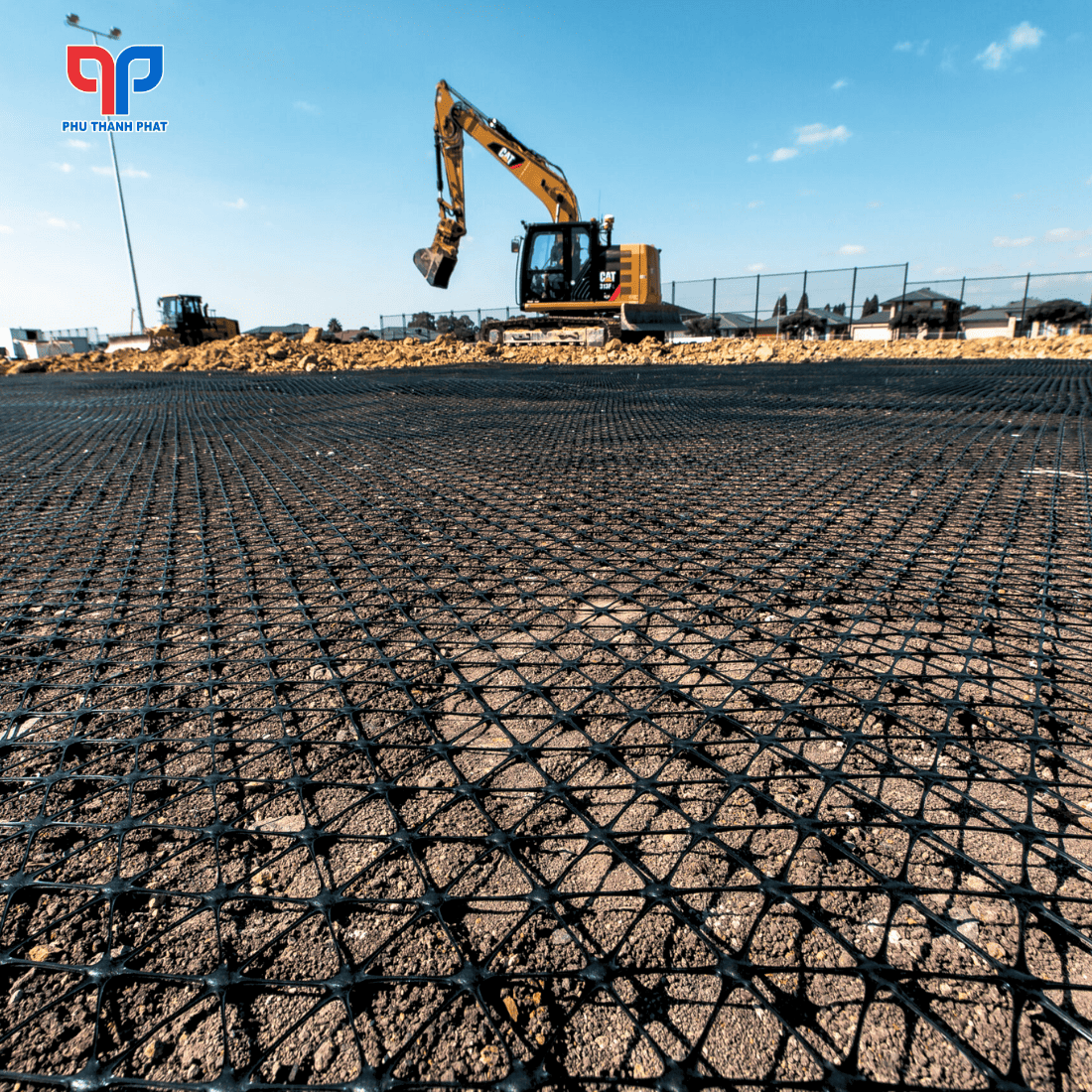
Geotextiles
Geotextiles are the largest group of geosynthetics, made from synthetic fibers (polyester, polypropylene) bonded through needle punching (non-woven) or weaving (woven).
They vary in strength, weight, and function, serving as filters, separators, drainage, reinforcement, and erosion control.
Geotextiles provide multiple function when combined with soil. They are used in road construction, drainage systems, and various engineering projects, including agricultural and environmental applications.
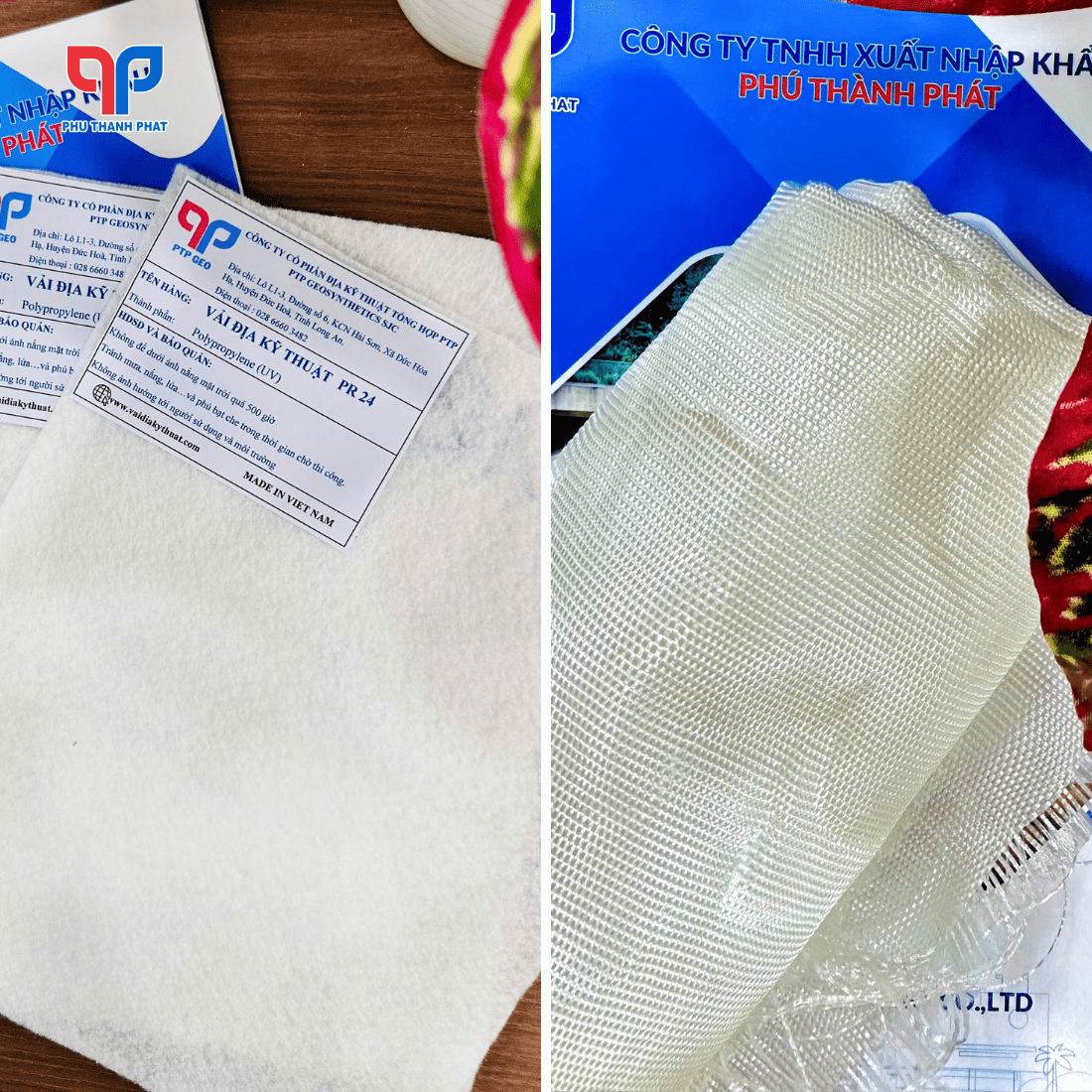
Geocells
Geocells are three-dimensional, honeycomb-like structures made from interconnected polyethylene strips or geotextile sheets.
They confine and stabilize infill materials (soil, sand, gravel), minimizing soil movement and providing stability and erosion control.
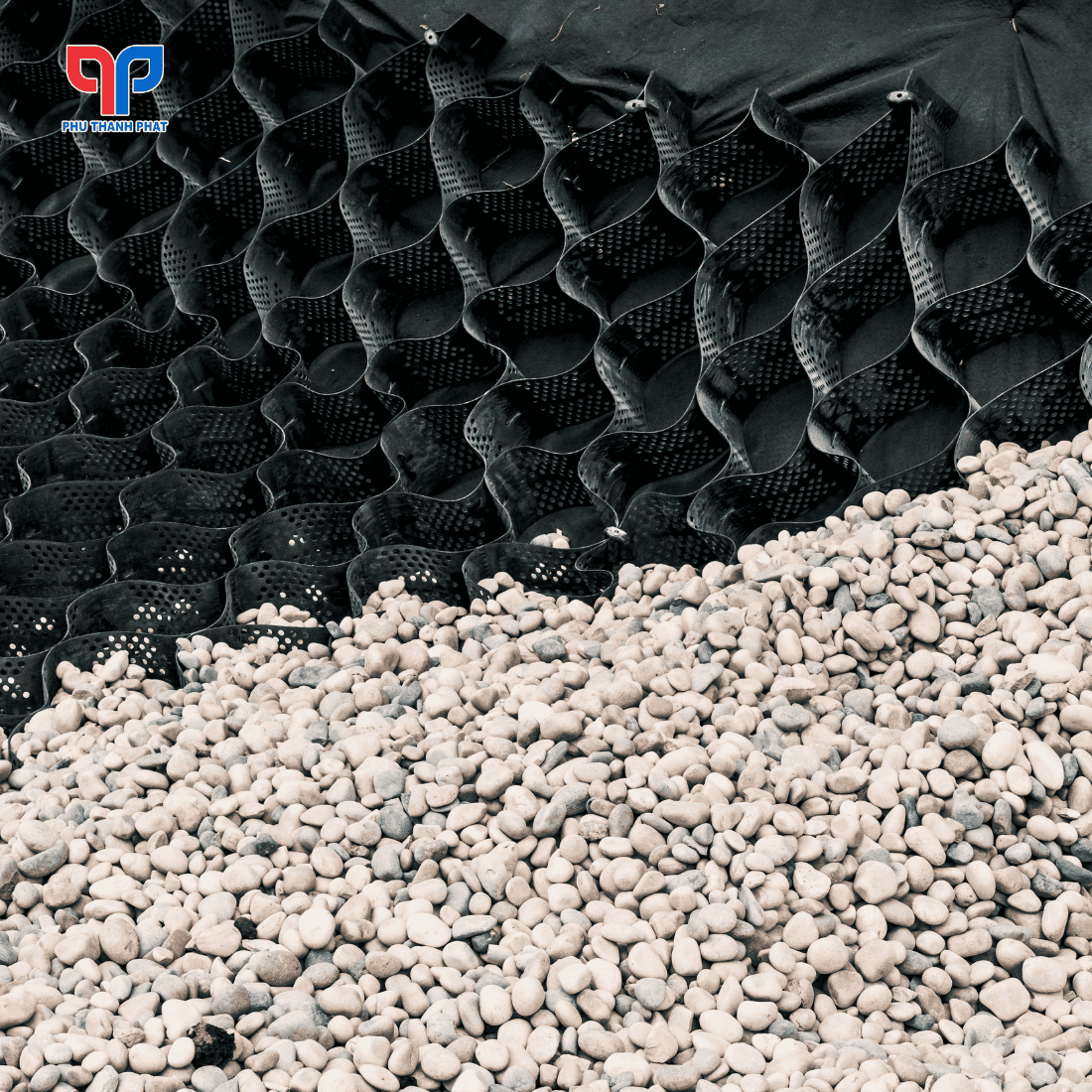
Geonets
Geonets are diamond-shaped mesh structures made from extruded polymer strands, often combined with geotextiles for drainage applications.
Geonets provide drainage, filtration, and soil reinforcement, reducing the risk of landslides and erosion.
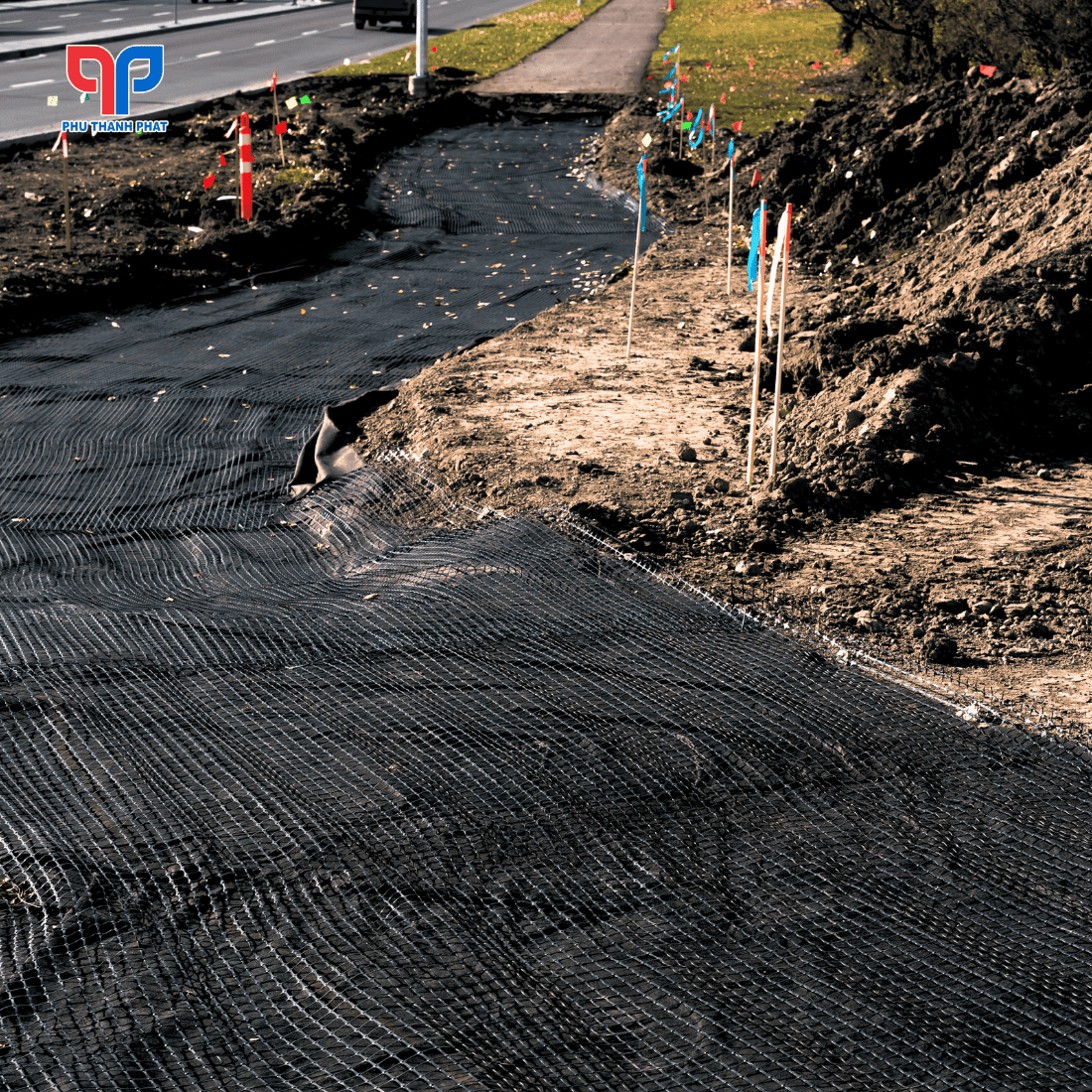
Geopipes
Geopipes are perforated or solid pipes made from polymers, used for fluid and gas drainage in construction projects.
They are often wrapped in geotextile filters and used in applications like landfill leachate collection.
*Note: Geopipes are different from Geotextile Tubes.
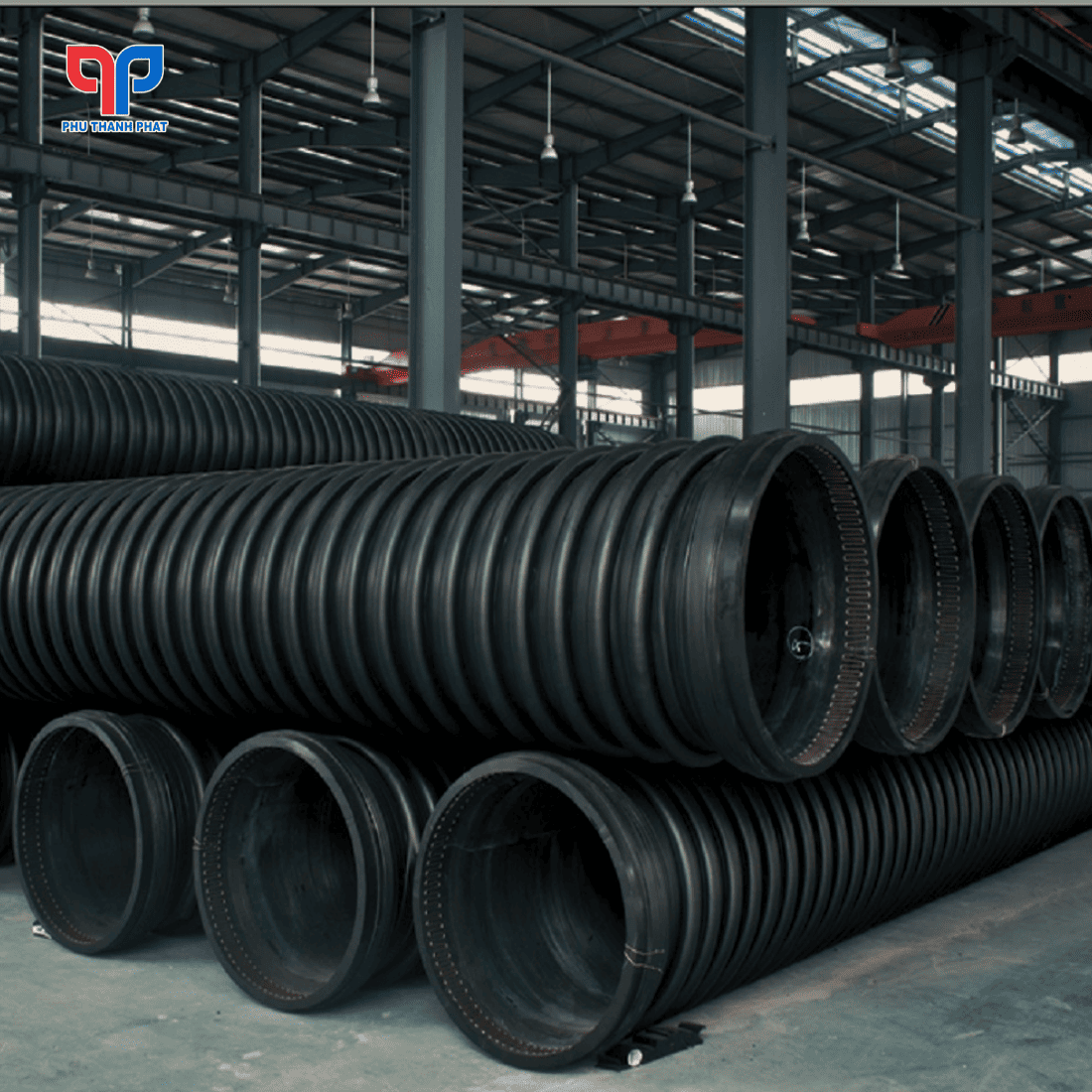
Geofoam
Geofoam (EPS) is a lightweight, expanded polystyrene material used as a soil replacement in various applications.
It reduces settlement in soft or compressible soils and serves as a lightweight core for embankments.
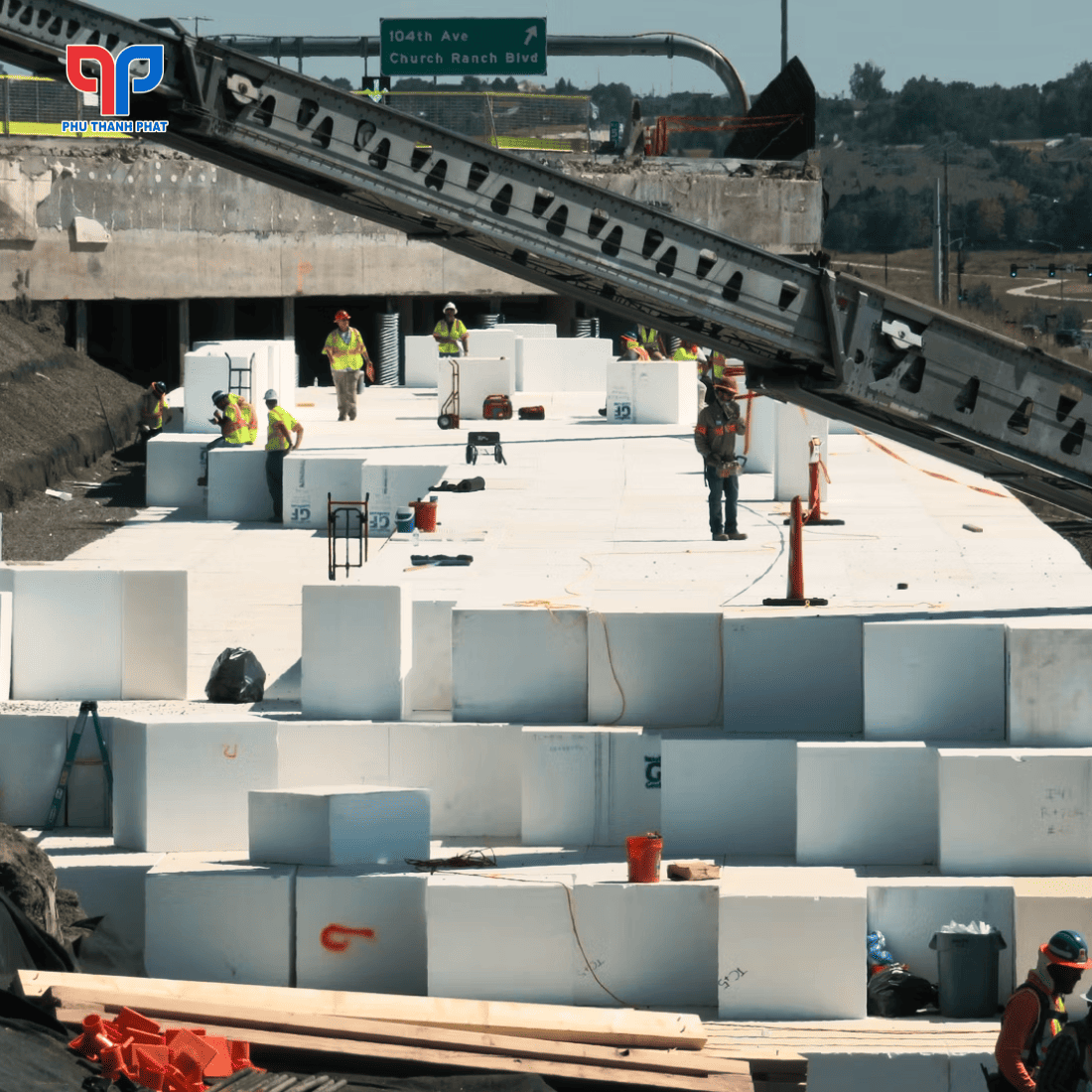
Geomembranes
Geomembranes (HDPE liners) are impermeable barriers made from HDPE, used to contain liquids or gases in geotechnical projects.
They are commonly used in landfills, mining, and agricultural applications.
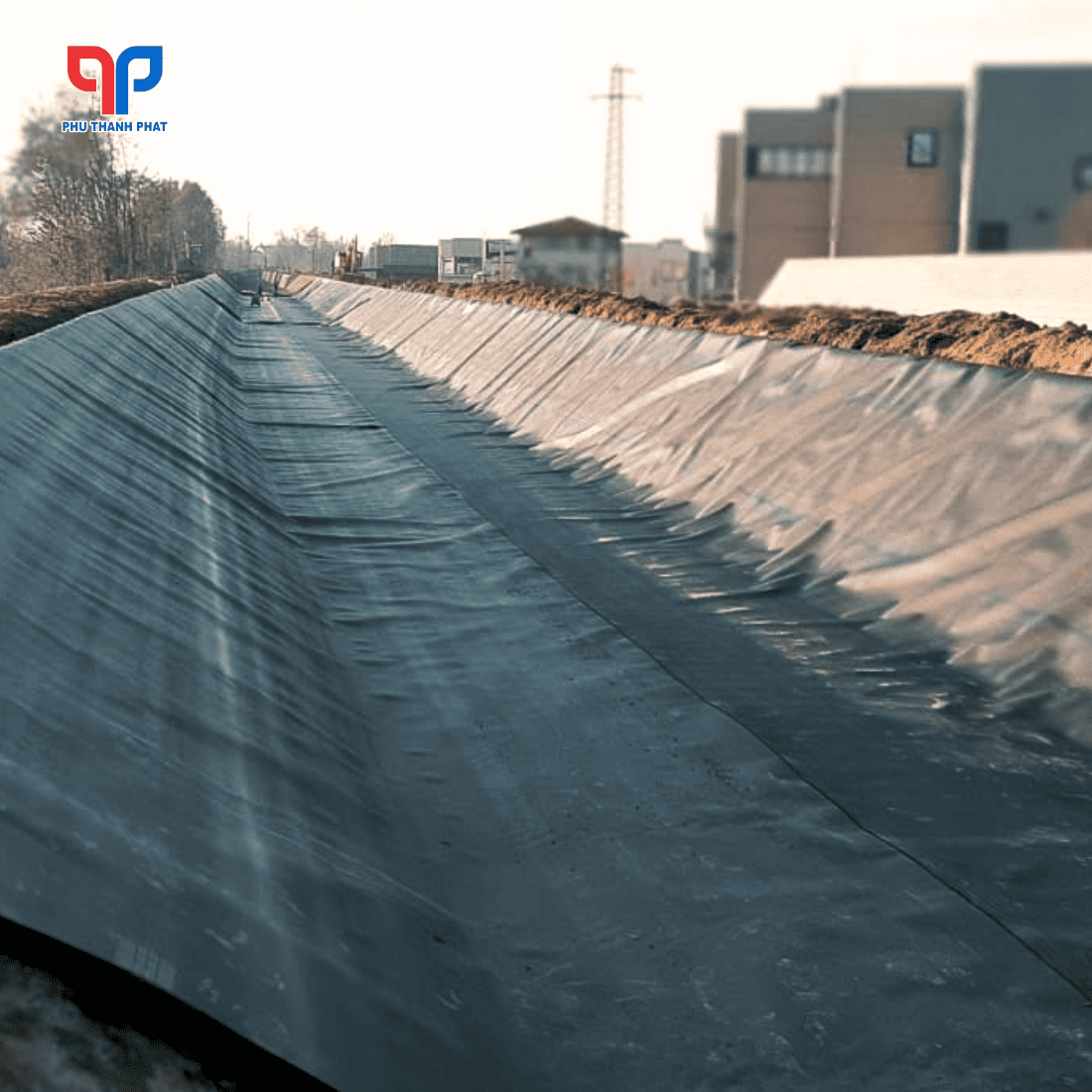
Geocomposite
Geocomposites combine two or more geosynthetic materials to provide multiple functions, particularly in drainage and road foundation applications.
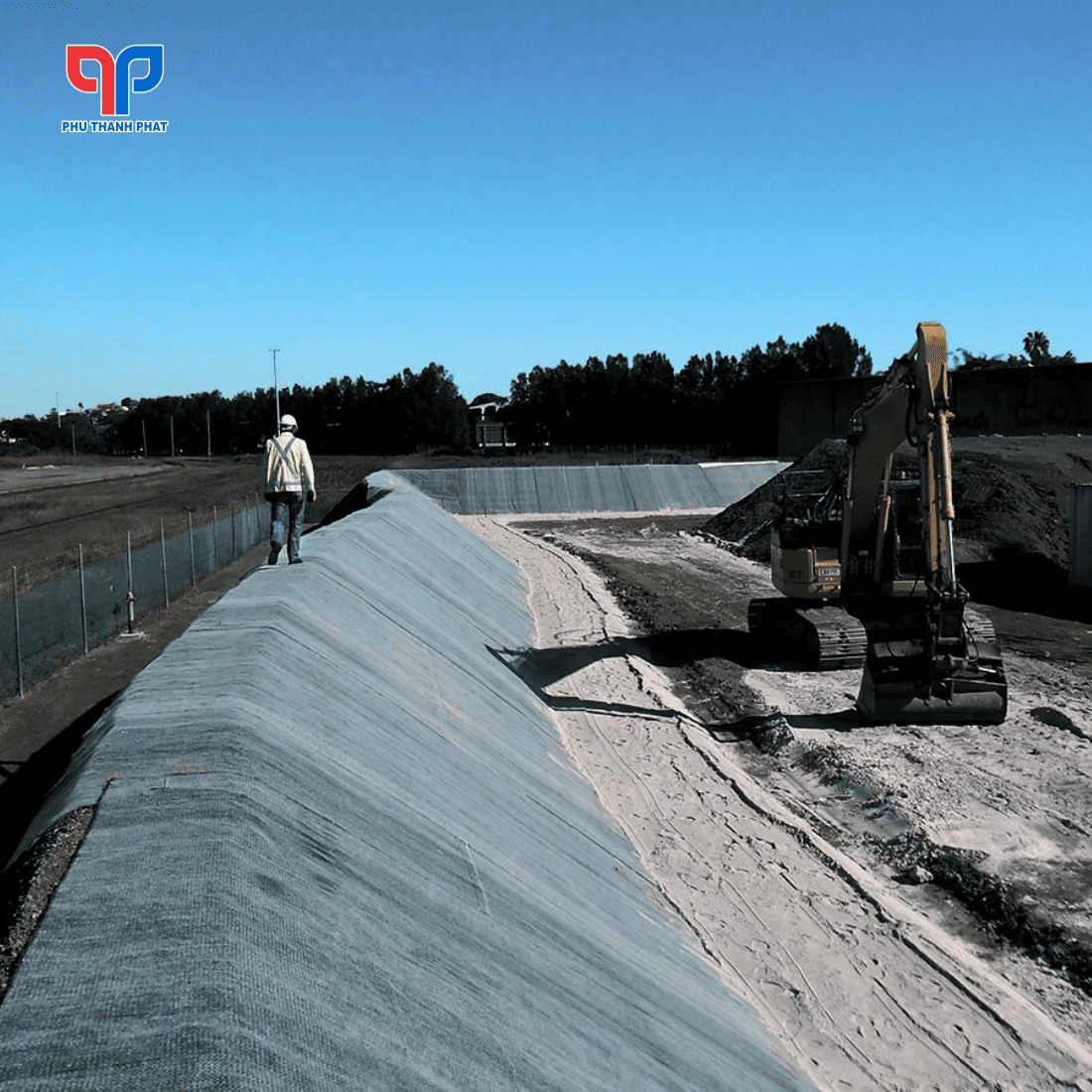
Geosynthetic Clay Liners (GCLs)
GCLs are composite barriers made from a layer of bentonite clay between two geotextile layers, providing a cost-effective alternative to traditional clay liners.
They are used in waste containment and landfill applications.
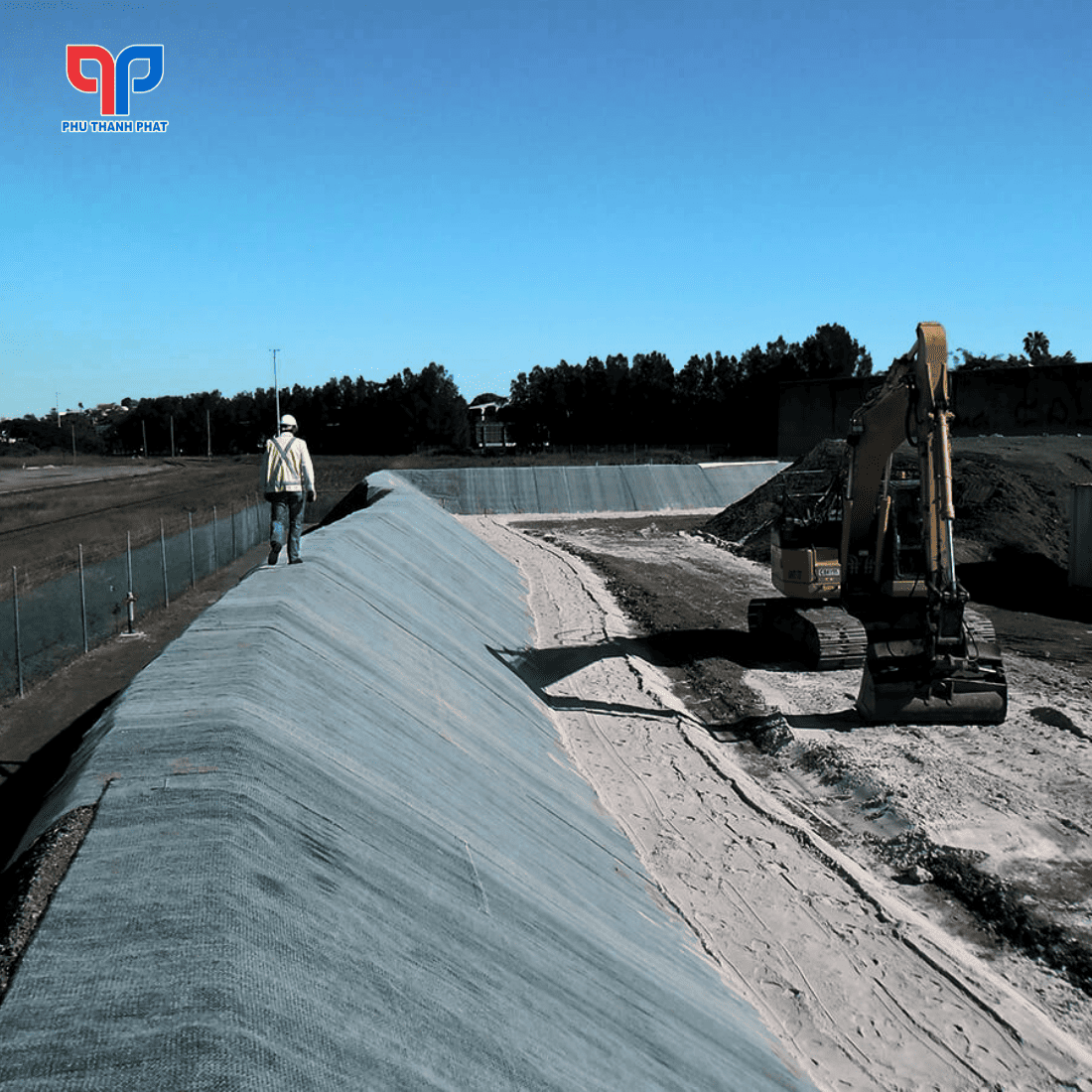
Functions of Geotechnical Materials
- Stabilization: Geosynthetics stabilize weak soils through mechanical interlock, enhancing the stability of roads, railways, and other infrastructure.
- Reinforcement: High-strength geosynthetics improve soil mechanical properties, enabling the construction of steeper slopes and embankments.
- Drainage: Geosynthetics facilitate water flow, reducing pore pressure and preventing structural damage.
- Erosion Control: Geosynthetics protect soil from wind and water erosion, promoting vegetation growth and preserving topsoil.
- Filtration: Geotextiles retain soil particles while allowing water flow, preventing clogging in drainage systems.
- Separation: Geosynthetics prevent the mixing of different soil layers, maintaining structural integrity.
- Protection: Geosynthetics act as protective layers for other materials, such as geomembranes and pipelines.
- Barrier: Geosynthetics provide impermeable barriers for containment of liquids and gasses.
Applications of Geotechnical Materials
- Transportation Infrastructure: Geosynthetics stabilize and reinforce road and railway foundations, enhancing load-bearing capacity and drainage.
- Retaining Structures and Slopes: Geogrids and geotextiles enable the construction of steeper slopes and reinforced earth walls, reducing construction time and costs.
- Foundations and Embankments: Geosynthetics stabilize weak soil foundations, preventing settlement and ensuring structural integrity.
- Drainage Systems: Geosynthetics facilitate water drainage and filtration in various civil engineering projects.
- Containment and Landfills: Geosynthetics provide impermeable barriers and drainage systems in landfills and mining applications.


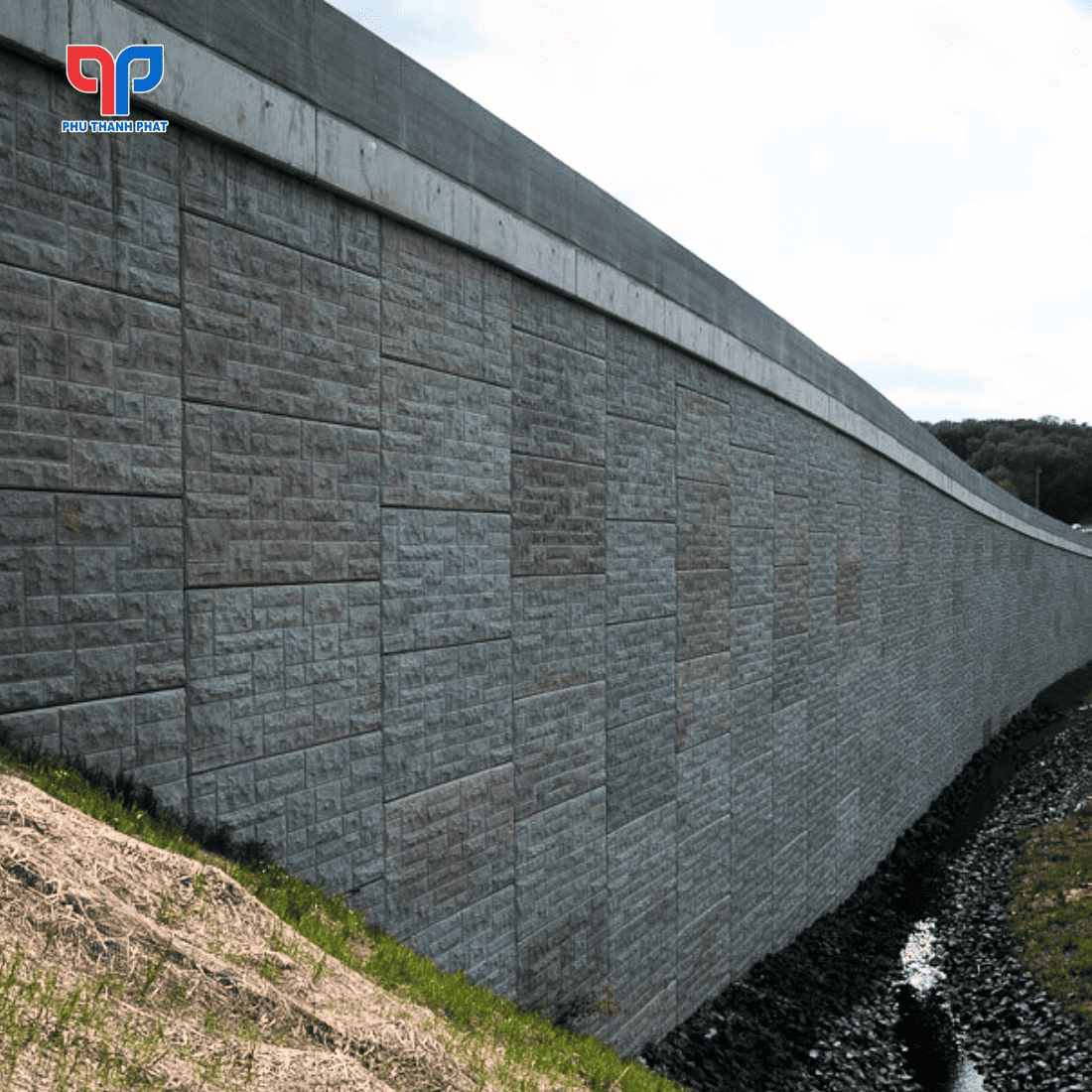
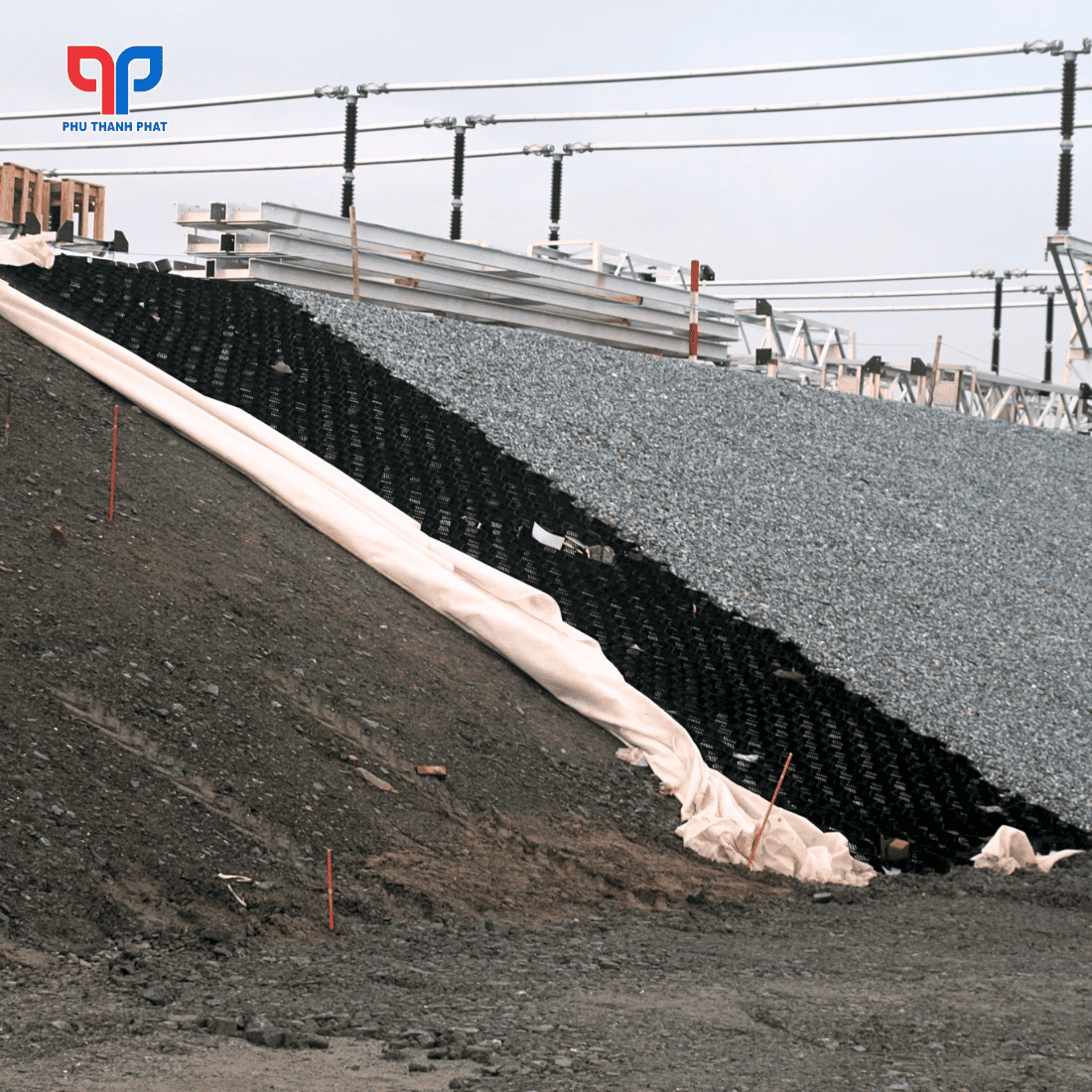
Benefits of Geotechnical Materials
- Extend the lifespan of heavy-duty structures on weak soils.
- Reduce the volume of aggregate materials in construction.
- Prevent erosion in coastal areas.
- Environmentally friendly.
- Increase Structure longevity.
- Cost savings.
- Simplified installation.
- Durability.
- High tensile strenght.
- Design Versatility.
- Environmental friendly.
- Resilience.
Conclusion
Geotechnical materials offer diverse solutions for various engineering challenges. Phu Thanh Phat hopes this article has provided valuable insights into their applications and benefits. For further inquiries or material procurement, please contact Phu Thanh Phat, a reputable provider of geotechnical solutions.
CONTACT INFORMATION
Head Office: 15 Street 5, Vinh Loc Residential Area, Binh Hung Hoa B Ward, Binh Tan District, Ho Chi Minh City
Hotline: 028.666.03482 – 0909.452.039 – 0903.877.809
Email: info@vaidiakythuat.com
